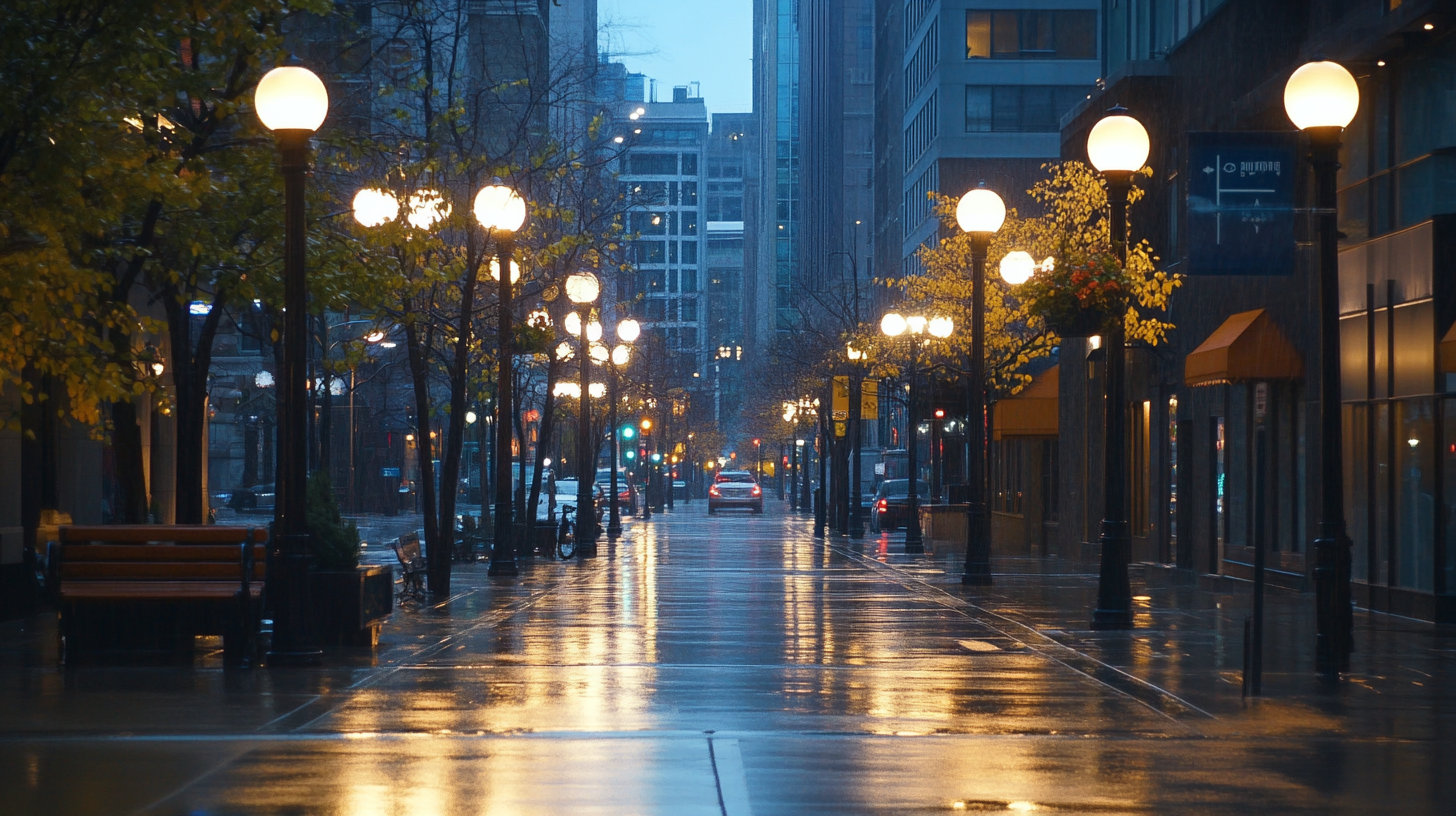7 Essential Tips for Choosing the Best Sidewalk Lighting for Global Buyers
When it comes to enhancing the safety and aesthetics of outdoor spaces, the importance of effective sidewalk lighting cannot be overstated. Whether you are a global buyer seeking to illuminate public walkways, residential pathways, or commercial spaces, making informed choices is crucial. This ultimate guide presents seven essential tips that will empower you to select the best sidewalk lighting solutions tailored to your specific needs and preferences. From understanding the types of lighting available to considering energy efficiency and design, these insights will help you navigate the myriad of options and ensure your sidewalks not only shine brightly but also create inviting environments for pedestrians. Join us as we delve into the world of sidewalk lighting and illuminate your purchasing journey!

Understanding Different Types of Sidewalk Lighting Options Available Globally
When it comes to enhancing public safety and aesthetic appeal, selecting the right sidewalk lighting is paramount. Various types of sidewalk lighting options are available globally, including LED, solar, and traditional incandescent lights. According to a report by the International Energy Agency, LED lights have gained significant attention due to their energy efficiency, consuming up to 75% less energy than incandescent lighting while boasting a lifespan of over 25,000 hours. The transition to LED is not just an economic choice; it also reflects a growing commitment to sustainability.
In addition to LED options, solar-powered sidewalk lights are increasingly common, especially in environmentally conscious regions. A report from Grand View Research indicates that the global solar street lighting market is expected to reach $23.5 billion by 2028, growing at a CAGR of 16.6%. These lights harness solar energy during the day and illuminate pathways at night, effectively reducing reliance on grid power and minimizing installation costs. Furthermore, traditional incandescent lights, although less energy-efficient, might still be preferred in certain historic districts, where preserving the aesthetic charm is vital. Understanding the diverse sidewalk lighting options available globally can empower buyers to make informed decisions that balance functionality, cost, and visual appeal.
Comparison of Different Types of Sidewalk Lighting Options
Key Factors to Consider When Comparing Sidewalk Lighting Features
When selecting sidewalk lighting, several key factors can significantly influence your decision. First and foremost, consider the brightness and light distribution of the fixtures. Adequate illumination is crucial for safety and visibility, so look for products that offer adjustable brightness levels and wide beam angles. Additionally, energy efficiency is paramount; opting for LED lights can not only reduce energy costs but also extend the lifespan of the fixtures.
Another important aspect to think about is weather resistance. Sidewalk lighting is subjected to various environmental conditions, so ensure that your chosen lights have a high IP rating for water and dust protection. Moreover, aesthetics play a role in urban planning and design; select fixtures that complement the surrounding architecture and landscape. Pay attention to the various styles and finishes available, as they can enhance the overall appeal of your outdoor spaces. Lastly, consider ease of installation and maintenance, as these factors can save time and resources in the long run.
Analyzing Energy Efficiency: Solar vs. Electric Sidewalk Lights
When choosing sidewalk lighting, the debate between solar and electric options is crucial, especially for global buyers prioritizing energy efficiency. According to the U.S. Department of Energy, solar fixtures can save approximately 50% to 70% more energy than traditional electric lighting systems. This reduction is largely due to solar lights' reliance on renewable energy sources, which significantly lowers operational costs over time. In addition, solar lights typically require less maintenance because they are not hardwired, leading to reduced labor expenses and environmental impact associated with installation.

On the other hand, electric sidewalk lighting systems offer higher brightness and longer continuous runtime, which can be advantageous in urban areas where consistent illumination is essential. A report from the International Energy Agency (IEA) notes that while electric lights have a higher initial installation cost, they provide powerful, reliable performance, especially during extended night hours. Moreover, advancements in LED technology mean that electric options are becoming more energy-efficient, with some newer models consuming up to 80% less energy than traditional incandescent bulbs. This development narrows the gap significantly between solar and electric options, urging buyers to consider both upfront costs and long-term savings in their decision-making process.
Cost Comparison: Initial Investment vs. Long-term Savings in Sidewalk Lighting
When selecting sidewalk lighting, it’s crucial to weigh the initial investment against potential long-term savings. Many buyers are often drawn to lower-priced options, but these can lead to higher maintenance costs and energy consumption down the line. Investing in high-quality, energy-efficient options like LED lights might seem more expensive upfront, but the reduced energy costs and longevity of the fixtures offer significant savings over time.
In addition to energy savings, consider the impact on maintenance. Cheaper lights may require more frequent bulb replacements and repairs, ultimately costing you more in labor and materials. By opting for durable, reliable lighting solutions, you not only enhance safety and visibility along sidewalks but also foster a cost-effective approach in the long run. Therefore, it’s essential for global buyers to look beyond the initial price and evaluate how their choices can yield financial benefits through reduced operating costs and improved durability.
7 Essential Tips for Choosing the Best Sidewalk Lighting for Global Buyers - Cost Comparison: Initial Investment vs. Long-term Savings in Sidewalk Lighting
| Lighting Type | Initial Investment (USD) | Energy Cost per Year (USD) | Lifespan (Years) | Total Cost over 10 Years (USD) |
|---|---|---|---|---|
| LED | $500 | $50 | 20 | $1,000 |
| Solar | $750 | $0 | 15 | $750 |
| Incandescent | $300 | $150 | 2 | $1,800 |
| Fluorescent | $400 | $100 | 10 | $1,400 |
| HID | $600 | $120 | 5 | $1,200 |
Evaluating Durability and Weather Resistance in Sidewalk Lighting Choices
When it comes to choosing the best sidewalk lighting, evaluating durability and weather resistance is paramount. Your chosen lights must withstand varying weather conditions, from intense rain to freezing temperatures. Look for materials that are rust-resistant and rated for outdoor use, ensuring they can handle exposure to the elements without significant wear over time.

One essential tip is to check the IP rating, which indicates the level of protection against dust and moisture. An IP65 or higher rating often signifies that the lighting will maintain performance in harsh weather. Additionally, consider investing in products that come with warranties or guarantees, as these can be indicators of the manufacturer's confidence in their durability.
Another crucial factor is the quality of the bulbs used in sidewalk lighting. Opt for energy-efficient LEDs that provide both brightness and longevity; not only do they help save on electricity bills, but they also reduce the need for frequent replacements, enhancing overall resilience. Choosing the right sidewalk lighting goes beyond aesthetics; it’s about ensuring that your investment will stand the test of time and weather.
